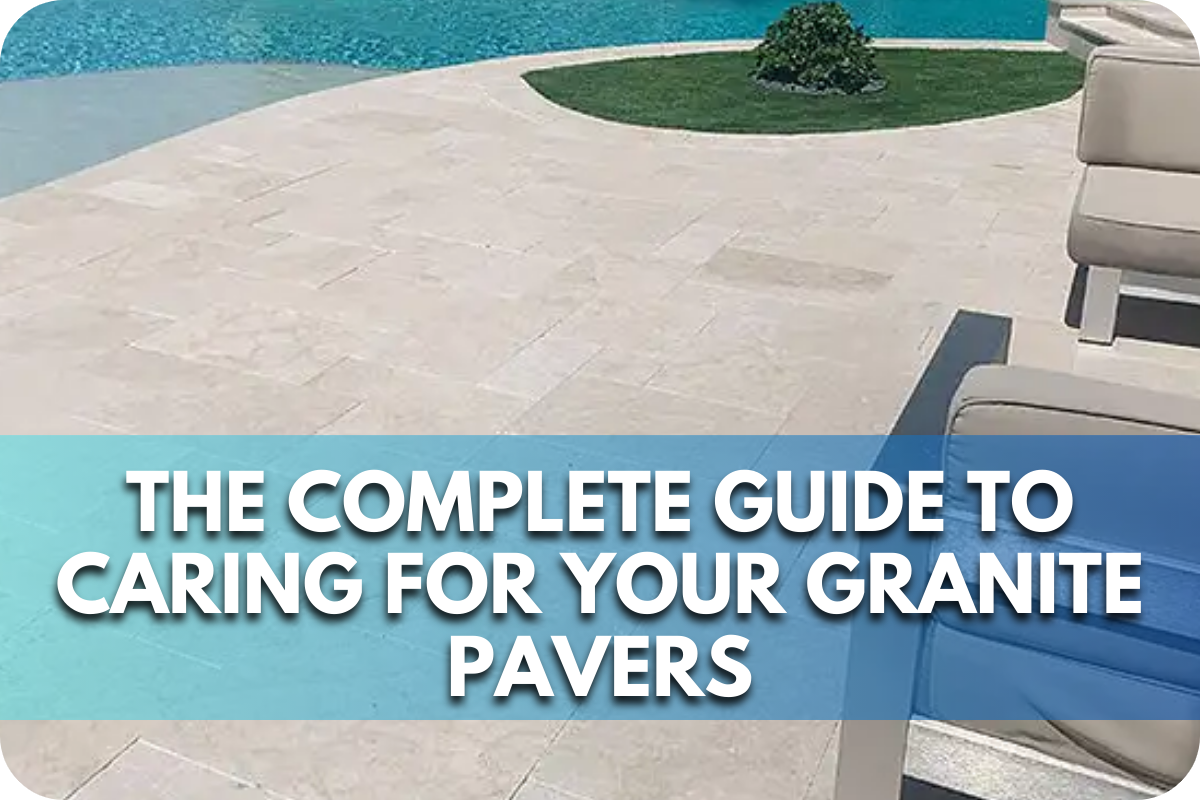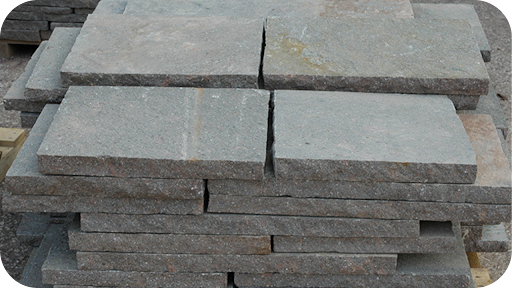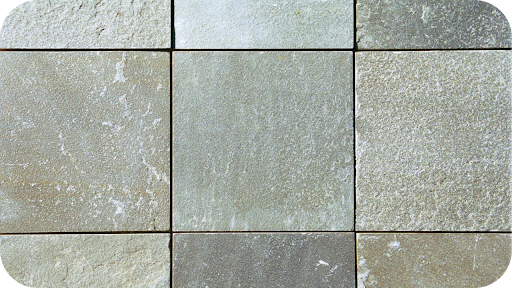
Granite pavers are a stunning addition to any outdoor space but can deteriorate over time without proper care.
Dirt, weathering, and neglect can dull the natural beauty of granite, leading to costly repairs or replacements that disrupt the elegance of your property.
This guide provides comprehensive tips and strategies for maintaining granite pavers.
From routine cleaning to preventative measures, learn how to keep your granite looking pristine year after year, ensuring your investment continues to enhance your home’s curb appeal and functionality.
1. Initial Installation and Treatment
Proper initial installation and treatment are crucial for ensuring the longevity and durability of your granite pavers. Prepare a stable and level base, typically compacted gravel and sand, to provide adequate support and drainage.
Ensuring the ground is even and well-compacted will prevent shifting and uneven settling over time.
When laying the granite pavers, maintain consistent spacing using spacers, and regularly check for levelness with a spirit level.
Use a rubber mallet to tap the pavers gently into place, ensuring a secure fit. After laying the pavers, fill the joints with fine or polymeric sand, which hardens upon contact with water, providing additional stability and resistance to weed growth.
To protect your investment, apply a high-quality sealer after installation. This treatment enhances the granite’s natural beauty and provides a protective barrier against stains, moisture, and the effects of weathering.
Choose a penetrating sealer for natural stone to ensure deep absorption and long-lasting protection.
Proper initial installation and treatment are essential steps that set the stage for your granite pavers’ enduring beauty and performance. These measures will help prevent common issues and ensure your outdoor space remains stunning for years.
For more information about proper installation, read this Installation Tips guide.
2. Routine Cleaning Practices
Routine cleaning is essential to maintain the pristine appearance of your granite pavers. Begin by sweeping the surface regularly with a stiff-bristled broom to remove loose dirt, leaves, and debris. This simple step prevents the accumulation of grime that can lead to staining and discolouration.
Use a mild detergent mixed with warm water for a more thorough clean. Avoid harsh chemicals and acidic cleaners, which can damage the stone’s surface.
Gently scrub the pavers with a soft brush or mop, particularly in stained or heavily soiled areas. After cleaning, rinse thoroughly with clean water to remove any soap residue, which can attract dirt and cause a slippery surface.
To tackle tougher stains, create a paste using baking soda and water. Apply the paste to the stained area and let it sit for a few minutes before scrubbing with a soft brush and rinsing with water.
For oil-based stains, use a specially formulated stone cleaner to break down and remove the residue without harming the granite.
Regular cleaning keeps your granite pavers looking their best and helps preserve their natural beauty and extend their lifespan.
3. Deep Cleaning Techniques
Over time, your granite pavers may require deep cleaning to remove ingrained dirt and stubborn stains. To start, sweep the area thoroughly to eliminate loose debris. Prepare a solution of pH-neutral cleaner and warm water, ensuring it is suitable for natural stone.
Apply the solution to the pavers and scrub with a soft-bristled brush. Avoid using wire brushes or abrasive pads that can scratch the surface. For tough stains, let the cleaner sit for a few minutes before scrubbing to allow it to penetrate and break down the grime.
For oil stains, use a poultice made of baking soda and water. Spread the paste over the stain, cover it with plastic wrap, and leave it for 24 hours. The baking soda will absorb the oil, making it easier to remove. Afterwards, rinse the area with clean water and scrub gently.
In cases of heavy soiling, consider using a pressure washer with a wide nozzle to avoid damage. Maintain a safe distance and use a low-pressure setting. Always follow up with a thorough rinse to remove any cleaning residues.
Deep cleaning not only restores the appearance of your granite pavers but also helps maintain their durability. Regular deep cleaning ensures your outdoor space remains attractive and well-maintained.
4. Stain Removal Tips
Stains on granite pavers can be challenging, but they can be effectively removed with the right techniques. Identify the type of stain before treatment to choose the appropriate method.
A solution of hydrogen peroxide and a few drops of ammonia can be effective for organic stains such as leaves, food, or bird droppings. Apply the solution to the stain, let it sit for a few minutes, then scrub gently with a soft brush and rinse with clean water.
Oil-based stains, like those from grease or cooking oil, require a different approach. Create a poultice using baking soda and water.
Apply the paste to the stain, cover it with plastic wrap, and leave it for 24 hours. The baking soda will draw out the oil, making it easier to remove. After 24 hours, rinse thoroughly and scrub gently.
Use a commercial rust remover specifically designed for natural stone for rust stains. Follow the manufacturer’s instructions carefully to avoid damaging the granite.
Ink or paint stains can be tackled with a mild solvent like acetone. Apply a small amount to a cloth and gently dab the stain until it lifts. Always rinse the area well after treatment to remove any residual solvent.
5. Preventative Measures
Preventative measures are essential to protect your granite pavers and extend their lifespan. Start by applying a high-quality sealer designed for natural stone. Sealing your pavers creates a protective barrier against stains, moisture, and the effects of weathering.
Reapply the sealer every 1-2 years, or as the manufacturer recommends, to maintain its effectiveness.
Regular maintenance is crucial. Sweep your pavers frequently to remove dirt and debris that can cause scratches or become embedded in the stone. In autumn, promptly clear fallen leaves and organic matter to prevent staining.
Fill the joints between pavers with polymeric sand to prevent weed growth and ant infestations. This sand hardens upon contact with water, providing a durable, weed-resistant barrier.
To protect your granite pavers from heavy impacts, avoid metal shovels or sharp snow and ice removal tools. Opt for plastic or rubber-edged tools instead. For added protection, consider placing mats or rugs in high-traffic areas to minimise wear and tear.
Lastly, drainage issues should be monitored and addressed to prevent water pooling, which can lead to erosion and damage over time. Ensure your installation has proper slope and drainage to direct water away from the pavers.
6. Repairing Damaged Pavers
Repairing damaged granite pavers promptly is essential to maintaining your outdoor space’s overall appearance and safety. Begin by inspecting the affected area to assess the extent of the damage. Common issues include cracks, chips, or loose pavers.
For minor cracks and chips, use a stone adhesive or epoxy filler specifically designed for granite. Clean the damaged area thoroughly to remove any dirt or debris. Apply the adhesive or filler according to the manufacturer’s instructions, smoothing it with a putty knife. Allow it to cure completely before using the area again.
In cases of severely damaged or loose pavers, replacement may be necessary. Carefully remove the damaged paver using a chisel and mallet, not disturbing the surrounding pavers. Prepare the base by ensuring it is level and compacted. Place the new paver in position, check for levelness, and adjust as needed. Fill the joints with sand or polymeric sand to secure the paver.
For larger repair projects, consider consulting a professional to ensure the work is done correctly and maintain the integrity of your paver installation.
7. Sealing Granite Pavers
Sealing your granite pavers is crucial in enhancing their durability and preserving their natural beauty. Begin by selecting a high-quality penetrating sealer specifically designed for natural stone. This type of sealer penetrates the stone’s pores, providing deep protection against stains, moisture, and the effects of weathering.
Before sealing, clean the pavers thoroughly to remove any dirt, debris, or stains. Allow the surface to dry completely to ensure optimal sealer absorption.
Use a brush, roller, or sprayer to apply the sealer evenly across the paver surface. Follow the manufacturer’s instructions for application techniques and drying times.
Apply a second coat if recommended, allowing adequate drying time between coats. This ensures maximum protection and enhances the pavers’ resistance to water and oil-based stains.
Regular reapplication of the sealer is essential to maintain its effectiveness. Typically, resealing should be done every 1-2 years or as the sealer manufacturer specifies. Regular sealing extends the lifespan of your granite pavers and keeps them looking vibrant and new.
8. Seasonal Care and Maintenance
Seasonal care and maintenance are vital for keeping your granite pavers in top condition throughout the year. Each season brings unique challenges, requiring specific care practices to maintain the integrity and appearance of your pavers.
In spring, thoroughly clean your pavers to remove winter debris, dirt, and moss. Use a mild detergent and a soft brush, followed by a thorough rinse. Inspect for any damage caused by winter weather and repair promptly.
During summer, the primary focus is protecting your pavers from heat and UV exposure. Apply a high-quality penetrating sealer to guard against fading and enhance stain resistance. Regularly sweep the pavers to remove dirt and organic matter that can lead to staining.
Autumn requires frequent removal of fallen leaves and debris to prevent organic stains. Clean the pavers with a mild detergent solution and inspect for any damage from summer use. If needed, consider applying another coat of sealer.
Winter care involves protecting your pavers from freeze-thaw cycles and de-icing chemicals. Use plastic shovels or snow blowers to remove snow and ice, avoiding metal tools that can scratch the surface. Opt for non-corrosive, stone-safe de-icing products to prevent damage.
Conclusion
Caring for granite pavers is essential to preserving their beauty and functionality. Regular maintenance, including proper cleaning, sealing, and timely repairs, ensures their longevity.
Use products designed for granite and consider professional assessments to keep pavers in optimal condition.
These practices can help you maintain your granite pavers’ enduring appeal and durability for years.
More To Explore

Choosing the Right Porphyry Cobblestones Supplier: What to Look For
Selecting the right cobblestones can define the quality and longevity of an outdoor project. The stone itself matters, but the supplier behind it often makes

Quartzite Pavers for Sale: Why They’re Worth the Investment
When planning an outdoor space, the choice of paving can make all the difference. It needs to be strong enough to handle daily use, stylish


